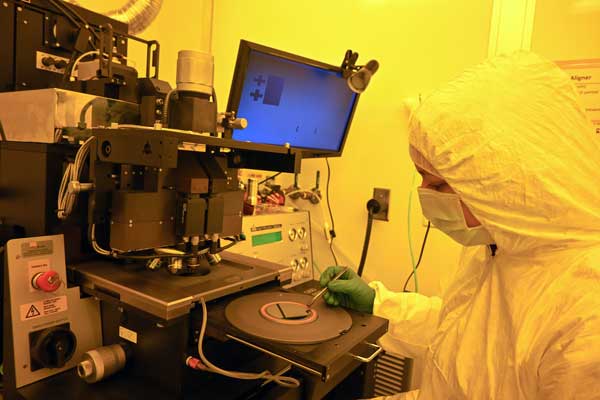News

National Science Foundation grant will help speed up semiconductor manufacturing
A $390,000 National Science Foundation grant will enable the University of Dayton to purchase equipment to create semiconductor chips and devices in hours rather than weeks, and at a significantly lower cost.
"With this direct-write laser beam lithography system, our researchers, faculty and students can quickly turn around their designs in our nanofabrication cleanroom," said Andrew Sarangan, project leader and chair of UD's department of electro-optics and photonics. "This will be very attractive for students interested in our new undergraduate minor in semiconductor manufacturing.”
In addition to UD's department of electro-optics and photonics, researchers, faculty and students in UD departments of electrical and computer engineering, engineering management and systems technology, physics and biology will use the equipment.
Read more about the award on the National Science Foundation website.
"This award, in addition to previous investments in our human and physical resources by the National Science Foundation and Intel, further solidifies the University as a player in the semiconductor industry, including the burgeoning landscape in the state of Ohio," UD School of Engineering Dean Gül Kremer said.
In August 2022, the University of Dayton joined leading Midwest research institutions in the Midwest Regional Network to Address National Needs in Semiconductor and Microelectronics to support the semiconductor and microelectronics industry's research, supply chain and workforce needs.
A month later, 14 University of Dayton faculty and staff in six labs became part of the Intel-funded Ohio-southwest Alliance on Semiconductors and Integrated Scalable Manufacturing to help develop a workforce for Ohio's semiconductor industry needs.
This past summer, with $353,378 from the National Science Foundation, UD provided the next generation of researchers working on semiconductor materials and electronic and photonic devices a 10-week session where they received hands-on training and conducted research in the UD Nanofab Lab. The students' work also supported research at the Air Force Research Laboratory at Wright-Patterson Air Force Base.
Anyone interested in learning more about the University's semiconductor alliances can contact Sarangan at asarangan1@udayton.edu.
For interviews, contact Shawn Robinson, associate director of news and communications, at srobinson1@udayton.edu.
